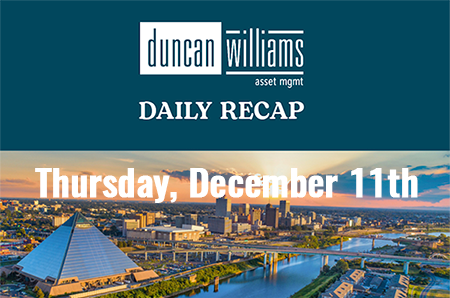Rebalancing Your Portfolio After Q2, 2025: What Investors Need to Know

After a rollercoaster second quarter, many investors are asking themselves: Is now the right time to rebalance my portfolio? Let’s break down what happened this quarter, why rebalancing is important, and some practical strategies to consider for the rest of 2025.
Q2 2025: A Wild Market Ride
Q2 started off bumpy. In April, U.S. markets dropped by more than 10% amid new tariffs and global trade tensions. Fortunately, things turned around: policymakers eased up on the tough talk, and the market staged an impressive recovery—especially among big tech stocks. By late June, the S&P 500 had not only bounced back but also hit new highs, thanks to strong performances by technology and some international stocks. On the flip side, energy and defensive sectors lagged as commodity prices slipped and investors shifted away from last year’s top performers.
Not surprisingly, AI powerhouses like NVIDIA and AMD led the pack. Healthcare, meanwhile, stood out as a value play with defensive strengths. This was a great reminder of why diversification matters: investors who moved some money into undervalued sectors like healthcare and industrials were better able to weather the volatility—and position themselves for future opportunities (AInvest, Morningstar, JP Morgan Private Bank).
The Rebalancing Imperative: Why Now?
When markets swing this quickly, your portfolio can easily get out of balance. After a quarter like Q2, you might notice that stocks—especially tech—now make up a much bigger portion of your investments than you planned. That could mean you’re taking on more risk than you’re comfortable with if tech hits a rough patch later this year.
Rebalancing helps bring things back in line with your comfort zone. By selling a bit of what’s done well and adding to areas that have lagged, you can lock in some gains and keep your portfolio diversified—a tried-and-true way to manage risk and aim for steady returns (White Coat Investor, Liberty Group LLC, Vision Retirement).
Real-World Rebalancing Strategies
- Threshold-Based Rebalancing: A popular approach is to rebalance whenever an asset class drifts more than 5% from your target. Say your tech stocks now make up 35% of your portfolio, but your goal was 28%. That’s a sign it’s time to sell a little and move those dollars into sectors like healthcare or international stocks that are underrepresented (AInvest, White Coat Investor).
- Periodic Reviews: Some investors prefer to set a regular schedule—every quarter, twice a year, or once a year—to check in and rebalance. This keeps things disciplined without racking up unnecessary trading costs.
- Tax-Efficient Choices: If you can, make your trades inside tax-advantaged accounts like IRAs or 401(k)s to keep taxes low. In taxable accounts, try to harvest losses to offset gains, and use new contributions to buy more of what you’re underweight in, instead of selling your winners.
- Strategic Cash Use: Got extra cash on hand? Put it to work in undervalued areas instead of letting it sit and drag down your returns (Forstrong Global).
Market Outlook & Looking Ahead
Analysts think we could see more ups and downs as economic policy, global events, and lingering effects from last year’s tariffs continue to shape the market mood. Most experts suggest sticking with a long-term plan that’s flexible—so you can grab growth opportunities but also stay balanced enough to handle any surprises (Horizon Investments, Corient, Trillium Asset Management).
Disclosure:
This article is for informational and educational purposes only. It does not constitute a recommendation to buy or sell any securities. Asset allocation and diversification do not guarantee profit or protect against loss. All investing involves risk, including the possible loss of principal. Investors should consult with a financial adviser and review their portfolio at least annually, and more frequently if their circumstances change.
Sources
- https://privatebank.jpmorgan.com/latam/en/insights/markets-and-investing/q2-2025-investment-review-steady-hands-prevail
- https://www.ainvest.com/news/rebalancing-portfolio-positioning-q2-2025-capitalizing-sector-divergence-tax-efficient-opportunities-2507/
- https://www.morningstar.com/markets/q2-2025-review-q3-2025-market-outlook
- https://libertygroupllc.com/how-to-rebalance-your-portfolio-for-the-second-half-of-the-year/
- https://www.whitecoatinvestor.com/rebalancing-back-to-basics/
- https://www.visionretirement.com/articles/investing/rebalancing-your-investment-portfolio
- https://forstrong.com/rebalance-summary/q2-2025/
- https://www.horizoninvestments.com/focus-quarterly-report-q2-2025/
- https://corient.com/insights/articles/q2-2025-thoughts-on-the-investment-markets
- https://www.trilliuminvest.com/newsroom/q2-2025-economic-and-market-outlook
- https://www.sec.gov/about/divisions-offices/division-investment-management/accounting-disclosure-information/adi-2025-15-website-posting-requirements












